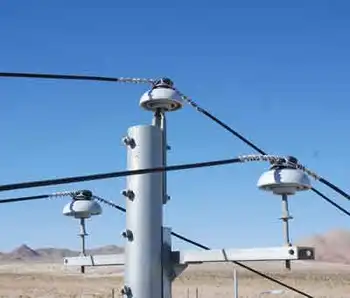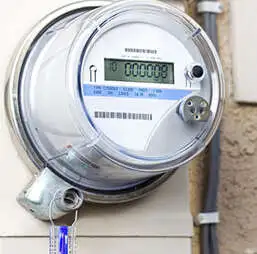Phantom power costs consumers hundreds
- Phil Ridge knows a lot about energy — he works in the field — but he used to be like the rest of us: just trying to remember to turn off the lights and continually complaining about his electricity bills.
Then he decided to do something about it. In one year, his family has cut its electricity consumption by more than half — or more than $600 a year. Much of those savings came through significant purchases — a high-efficiency air conditioner, an Energy Star washing machine and dishwasher, new windows.
But Mr. Ridge, who owns a company that audits homes for energy efficiency, went one step further: He decided to tackle his home's standby power. "By investigating your home and controlling your expenditure by turning things off, you can really reduce the amount of power you use tremendously," he says.
That means turning off more than just your lights. According to the California-based Lawrence Berkeley National Laboratory, most of the electrical products in our homes — especially in our home offices and entertainment centres — can't be switched off unless you unplug them, which means that in most homes they're drawing power 24 hours a day.
The typical American home has about 40 of these products, the centre says, and the phantom power they use adds up to about 10 per cent of residential electricity use. "It really depends on the home," says Kevin Pegg, chief executive officer of Energy Alternatives Ltd., a renewable-energy company based in Victoria. "I've seen places [where it adds up] to 20 per cent. Some homes, people have every gadget known to humankind there, always plugged in and running."
Mr. Pegg cites the example of his own satellite dish and its receiver: "It draws 30 watts of power when it's on and it draws 30 watts of power when it's off."
Karen George, a project manager in energy efficiency at the North Carolina-based, non-profit Electric Power Research Institute, says there are many things that people don't realize use power. "The charger for your [mobile] phone, for example. If that's just plugged in, it's going to be drawing power. It's very small, but some homes have many plugged in at once."
In Mr. Ridge's case, he bought an energy meter and got to work measuring every appliance and gadget. The stereo and one particular printer were two big offenders — the stereo alone used 300 watts on standby.
Poor wiring in the basement pot lights meant that they were using 300 watts 24 hours a day and a faulty garage door opener left a 60-watt light burning continuously as well. The stereo was burning more than $14 a month when not in use — the equivalent of leaving on five 60-watt light bulbs all the time.
Mr. Ridge fixed everything. He also figured out how to turn everything off — by plugging some things into a power bar that he could turn off or by just unplugging appliances and gadgets. It's part of his routine now when he goes to bed to turn everything off.
To guide him, he purchased a device called The Energy Detective, which measures how much energy is being used in the home at any given time. He checks it at the end of the day, and if that number is higher that 80 watts the level of standby power Mr. Ridge allows in his home, he knows he left something on — and he goes to look for it.
Mr. Pegg says power bars are a great way to deal with standby power, but if you are doing new construction, you should consider having switched outlets. When he had his own office rebuilt, he rewired it to have one light switch for turning the lights on and off, and another that controls the computer, scanner and other office gadgets.
"So it becomes very easy as I leave my office just to switch it off."
Mr. Pegg blames "lazy" manufacturers for many of the high levels of standby power in appliances and gadgets. "When someone is designing an electric component, they have choices. And with electricity being too cheap in this country, the manufacturers don't care. Whereas if you take another country, European countries that might be paying five, 10, 20 times what we are for power, that starts making a big difference. And those consumers have higher expectations of their appliances."
But standby power also exists for a reason — it keeps programming in place and appliances ready for use. For example, any appliance or gadget with a remote control needs some standby power for it to read the commands of the remote.
But Mr. Ridge says that even turning off those kind of appliances and gadgets isn't hard. "I was pleasantly surprised - it's not that difficult to turn off all your computer equipment — even the Internet, your cable modem and everything. They're designed to work in a power failure.
"So when you turn it back on, it all just comes back."
Just because you're not using it doesn't mean it's not costing you. Phantom power can lurk in any corner of your home. Here's how much a typical home theatre system might be draining from your wallet when left plugged in measured in approximate maximum kilowatts a year:
Receiver 129.429 kW equals $9.06
Game console in ready state 418.7718 kW equals $29.31
Desktop computer on sleep 598.527 kW equals $41.90
Two televisions with remote 135.342 kW equals $9.47
DVR with remote 286.452 kW equals $20.05
DVD/VCR 82.439 kW equals $5.84
Subwoofer 135.342 kW equals $9.47
GRAND TOTAL 125.10/year
Related News

BOE Says UK Energy Price Guarantee is Key for Next Rates Call
LONDON - Bank of England Deputy Governor Dave Ramsden said financial markets are still unsettled about the outlook for the UK and that a Treasury statement due on Oct. 31 may provide some reassurance.
Speaking to the Treasury Committee in Parliament, Ramsden said officials in government and the central bank are dealing with huge economic shocks, notably the surge in energy prices that came with Russia’s attack on Ukraine. Investors are reassessing where interest rates and the fiscal stance are headed.
“Markets remain quite febrile,” Ramsden told members of Parliament in London on Monday. “Things have not settled down yet.”
He described the…




